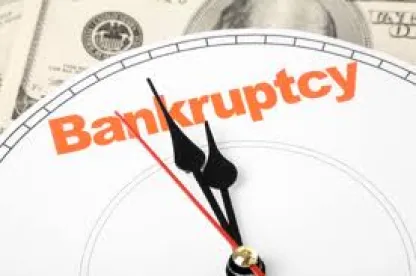The influential Second Circuit Court of Appeals recently joined other circuits that permit a Section 363 sale of the debtor’s property “free and clear” of “successor liability.” Because General Motors did not give proper notice to known, pre-petition creditors asserting products liability claims, however, due process did not permit the GM bailout sale to block successor liability.[1] The court set important rules for buyers to follow in determining the following:
-
Which types of claims can be blocked by a Section 363 sale,
-
What notice must be given to those creditors,
-
What prejudice from lack of notice must a creditor suffer in order avoid the limitation on successor liability claims otherwise resulting from a Section 363 sale order.
The General Motors bankruptcy was one of the landmarks of the 2008-2009 financial crisis. When private restructuring and a $20 billion governmental bailout failed, General Motors (now called Motors Liquidation Co., referenced here as “Old GM”) filed its $82 billion bankruptcy case. Old GM took advantage of $33 billion in additional DIP financing to bridge operations for 40 days until its principal operating assets could be sold through a Section 363 sale to a new entity principally owned by the U.S. Treasury and pension and benefits funds (New GM). New GM did not assume most of the claims against Old GM, however. Several groups of creditors later sued New GM, including plaintiffs in class actions seeking $7 to $10 billion for alleged vehicle defects, including defective ignition switches that were the subject of 60 recalls affecting at least 25 million cars in the United States alone.
The appeal to the Second Circuit followed New GM’s successful effort to persuade the bankruptcy court presiding over the Old GM bankruptcy case to interpret its sale order as enjoining the creditors’ suits. The Second Circuit reversed and overturned the bankruptcy court’s opinion with the following principal holdings. These holdings are of interest to all companies seeking to get the best possible price for their assets by selling free and clear of successor liability.
Section 363 Sales Can Block Successor Liability for Claims that Are “Interests in Property”
Section 363 of the Bankruptcy Code does not expressly authorize sales free and clear of “claims” per se, only “free and clear of any interest in such property of an entity other than the estate.”[2] The Second Circuit followed prior decisions wherein the statutorily undefined term “interest” is broadly interpreted to encompass successor liability for claims that flow from the property and businesses being sold.[3] However, the court noted that Section 363 could not provide broader protection against successor liability than a discharge under a Chapter 11 plan. Hence, New GM only would be protected from claims flowing from the transferred assets that (i) involved a right to payment, (ii) arose before the filing of the petition or resulted from pre-petition conduct “fairly giving rise to the claims,” and (ii) were not completely unforeseen but had “some contact or relationship between the debtor and the claimant such that the claimant is identifiable.”[4]
The court applied a two-part screen to the plaintiffs’ claims falling into four separate groups:
-
Damages claims arising from pre-closing accidents,
-
Economic loss claims arising from the ignition switch defect,
-
Independent claims relating only to New GM’s conduct,
-
Claims brought by individuals who purchased used cars with the ignition switch defect after the Section 363 sale closed.
Successor liability for claims in Groups 1 and 2 could be extinguished under Section 363(f) because they were interests that arose from Old GM’s pre-petition auto making business. However, Group 3 claims could not be extinguished because they arose solely out of New GM’s post-closing actions. Similarly, claims in Group 4 could not be extinguished because those claimants had no relationship with Old GM prior to the Section 363 sale, contractual or otherwise, and, hence, no awareness that the bankruptcy might affect their later-acquired interests.
Successor Liability for “Known” Claims Cannot Be Blocked without Providing Adequate Notice of the Sale to the Claimants
Unfortunately for New GM, Constitutional due process blocked protection against claims in Groups 1 and 2 if Old GM “knew or with reasonable diligence should have known” about the defects in their cars, but did not provide individual notice to the claimants.[5] The claimants alleging ignition switch defects were entitled to actual, mailed notice of the sale (rather than publication notice) because the bankruptcy court’s factual findings “paint a picture that Old GM did nothing, even as it knew that the ignition switch defect impacted consumers.”[6] An exhaustive internal investigation of this defect showed that:
Old GM engineers should have followed up when they learned their ignition switch did not initially pass certain technical specifications [or] . . . when they heard disturbing reports about airbag non-deployments or moving stalls . . . . If any of these leads had been diligently pursued in the seven years between 2002 and 2009, Old GM likely would have learned that the ignition switch defect posed a hazard for vehicle owners.[7]
The Second Circuit did not rule whether the claimants asserting other defects were able to evade Section 363(f) because Old GM’s knowledge had not been established at trial. Instead, the Second Circuit remanded for the bankruptcy court to determine if such claimants also were known creditors and, hence, entitled to individual mailed notice.
Prejudice from Lack of Notice Includes Missing a Seat at the Negotiating Table
The Second Circuit narrowed one of the most important protections of a buyer in a Section 363 sale who finds out—after the fact—that a creditor was not given proper notice. It overruled the bankruptcy court’s determination that, even though the ignition switch plaintiffs did not receive proper notice, they nevertheless were barred because they were not prejudiced. The bankruptcy court reasoned that it still would have entered the sale order barring successor liability because it overruled 850 other objections to the “free and clear” provisions of the order. Without determining if prejudice was necessary,[8] the Second Circuit held that these claimants were prejudiced because other claimants negotiated exceptions that required New GM to assume liability.
The Second Circuit reasoned that the issue of prejudice is not answered by whether the court would have reached the same decision even if the claimants had objected. Unlike a traditional lawsuit, “section 363 sales are, in essence, private transactions” over which the bankruptcy court only provides minimum oversight and finds that a good business reason exists for the sale.[9] Accordingly, a creditor lacking notice may be prejudiced if lack of notice denies it a chance to negotiate successor liability. Here, “the business circumstances at the time were such that [the claimants] could have had some negotiating leverage, and the opportunity to participate in the proceedings would have been meaningful.”[10]
The Second Circuit was ultimately convinced that the claimants could have had negotiating leverage because: (a) the goal of restoring consumer confidence would have been undermined by stonewalling the claimants, (b) New GM acceded to the demand of states’ attorneys general for the assumption of similar products liability claims under state Lemon Laws, and (c) claimants had considerable negative leverage from litigation because Old GM expected to lose $125 million every day until the sale was consummated.[11]
Conclusion
The Second Circuit’s decision left New GM on the hook for billions of dollars of liabilities related to the ignition switch defect. Although the circumstances of that bankruptcy were unprecedented, debtors and buyers seeking to use Section 363(f) to block successor liability should consider expanding their due diligence to follow the guidelines of Motor Liquidation in bankruptcy acquisitions:
-
Carefully examine the categories of claims for which successor liability is to be barred, using the four categories found in Motor Liquidation as a guide for determining whether there is an appropriate nexus to the assets being sold.
-
Carefully review the notice given to the debtor’s creditors and whether the debtor’s business records would cause a reasonable person to conclude a defect in one of the debtor’s products gives rise to claims. If the buyer seeks to bar successor liability, then it should require mailed notice of the sale to these claimants, possibly using the warranty registration information in the debtor’s databases. The buyer should obtain the bankruptcy court’s approval of the adequacy of such mailed notice.
-
Be reasonable in determining the scope of assumed liabilities at the outset in the asset purchase agreement, rather than making piecemeal concessions to objecting creditors only. Negotiating to assume liability for objecting creditors could prove that other creditors lacking notice were prejudiced by being denied a seat at the negotiating table.
-
If the debtor’s business may give rise to future claims because of a lack of cognizable injury prior to the Section 363 sale, then it may be necessary to confirm a plan of reorganization to bar successor liability by discharging those claims, possibly after an appointment of a representative to negotiate plan terms on behalf of such future claimants. This technique is based on channeling injunctions in plans for debtors with asbestos claims authorized under Section 524(g) of the Bankruptcy Code but has been used successfully in several other contexts.
-
In any event, consult your insurance professionals to obtain appropriate coverage against successor liability claims. No matter how carefully the buyer performs due diligence, the compressed time frame and financial distress of the seller may allow successor liability for certain claims to slip through Section 363(f).
If you have questions about successor liability after General Motors, please contact Mark Fisher, Michael Ott, or any member of the firm’s Restructuring, Bankruptcy and Creditors’ Rights Group.
[1] Elliott v. General Motors LLC (In re Motors Liquidation Company), Slip. Op., No. 15-2844 (2d Cir. July 13, 2016).
[2] 11 U.S.C. § 363(f).
[3] Motors Liquidation, Slip Op. at 37 (citing In re Leckie Smokeless Coal Co., 99 F.3d 573, 581-82 (4th Cir. 1996) (Section 363 sale order barred successor liability claims under Coal Act); In re Trans World Airlines, Inc., 322 F.3d 283, 288-90 (3d Cir. 2003) (employment discrimination claims from conduct prior to Section 363 sale and travel vouchers settling same); Precision Indus., Inc. v. Qualitech Steel SBQ, LLC, 327 F.3d 537, 545 (7th Cir. 2003) (Section 363 sale order’s “free and clear” language extinguished lessee’s interest in property despite other provisions of bankruptcy code protecting landlords following rejection of lease).
[4] Motors Liquidation, Slip Op. at 39-40, citing In re Chateaugay Corp., 52 F.3d 478, 497 (2d Cir. 1995).
[5] Id. at 48.
[6] Id.
[7] Id. at 49.
[8] The Second Circuit also pointed out the existence of a circuit split on the question of whether a litigant alleging a due process violation needs to show prejudice. The court declined to address the issue because it found that the claimants had adequately established prejudice.
[9] Id. at 54-55.
[10] Id. at 60.
[11] Id. at 60-64.



 />i
/>i
